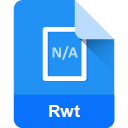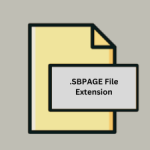.MINDER File Extension

Minder Mind Map
| Developer | Trevor Williams |
| Popularity | |
| Category | Page Layout Files |
| Format | .MINDER |
| Cross Platform | Update Soon |
What is an MINDER file?
.MINDER file extension is associated with Minder, a mind mapping software designed to help users organize their thoughts, ideas, and projects visually.
Mind maps are a popular tool for brainstorming, planning, and structuring information, and .MINDER files store these maps in a digital format, allowing for easy editing, sharing, and archiving.
More Information.
Mind mapping as a concept has been around for centuries, with early examples found in the works of philosophers and educators.
The digital age brought new possibilities for mind mapping, leading to the development of various software applications.
Minder emerged as a modern tool designed to leverage these possibilities, providing an intuitive interface and robust features for mind mapping.
The initial purpose of the .MINDER file was to offer a flexible and efficient way to save and manage mind maps created with the Minder software.
By storing all relevant data, including nodes, connections, colors, and annotations, in a single file, users could easily save their work, transfer it between devices, and share it with others.
Origin Of This File.
The .MINDER file format was created by the developers of Minder, a software application specifically tailored for mind mapping. Minder was developed to address the need for a simple yet powerful tool to create, manage, and share mind maps.
The software and its proprietary .MINDER file format aimed to provide a user-friendly solution for individuals and teams to visually represent their ideas and workflows.
File Structure Technical Specification.
A .MINDER file typically consists of the following components:
- Header Information: This includes metadata about the file, such as the software version, creation date, and author information.
- Nodes: These represent the individual ideas or concepts within the mind map. Each node contains information such as the text, position, color, and any associated icons or images.
- Connections: These define the relationships between nodes. Connections can be directional or non-directional and may include additional attributes like line style and color.
- Annotations: Users can add notes, hyperlinks, and other annotations to nodes, enhancing the information contained within the mind map.
- Formatting Details: This includes information on the overall layout, such as background color, font styles, and other visual elements.
Technical Specification
The .MINDER file is typically stored in a compressed format, allowing for efficient storage and transfer. The compression also helps in reducing the file size without compromising the quality and detail of the mind map.
The underlying structure is often based on XML or JSON, providing a readable and easily parsed format for software applications.
How to Convert the File?
To convert a .MINDER file to another format, such as PDF, PNG, or a different mind mapping format, users typically need to use the Minder software or a compatible third-party tool. Here are the general steps:
- Open the .MINDER File: Launch the Minder software and open the .MINDER file you wish to convert.
- Export Option: Navigate to the export or save as option within the software.
- Choose Format: Select the desired output format (e.g., PDF, PNG, .MM for FreeMind, etc.).
- Save: Specify the location and save the file in the chosen format.
Some third-party tools and online converters may also support the conversion of .MINDER files. However, the quality and accuracy of the conversion can vary.
Advantages And Disadvantages.
Advantages
- Visual Organization: Mind maps are excellent for visually organizing complex information, making it easier to understand and recall.
- Flexibility: The .MINDER format allows for easy editing and restructuring of mind maps, enabling users to adapt their maps as their ideas evolve.
- Integration: Minder often integrates with other productivity tools, allowing users to import and export data seamlessly.
- Sharing: .MINDER files can be easily shared with others, facilitating collaboration and feedback.
Disadvantages
- Proprietary Format: As a proprietary format, .MINDER files may not be compatible with other mind mapping software, limiting their portability.
- Dependency on Software: Users need the Minder software to open and edit .MINDER files, which can be a limitation if the software is no longer supported or if users prefer other applications.
- Learning Curve: While Minder is designed to be user-friendly, new users may still face a learning curve in mastering the software and its features.
How to Open MINDER?
Open In Windows
1. Minder Software: The primary method to open .MINDER files on Windows are by using the Minder software.
- Download and install Minder from the official website.
- Launch the application and use the open option to load your .MINDER file.
2. Third-Party Tools: Some third-party applications may support .MINDER files or offer conversion options.
Open In Linux
1. Wine: Use Wine, a compatibility layer for running Windows applications on Linux.
- Install Wine and use it to run the Windows version of Minder.
2. Virtual Machines: Alternatively, run a Windows virtual machine using software like VirtualBox or VMware and install Minder within the VM.
Open In MAC
1. Minder Software: If Minder is available for macOS, download and install it from the official source.
- Open the application and load your .MINDER file.
2. Virtual Machines/Emulators: Use a Windows emulator or virtual machine to run the Windows version of Minder if a native macOS version is unavailable.













